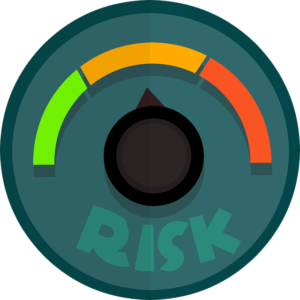Risk management is one of the central variables governing the success of an investment. When traders apply principles of risk identification, evaluation and mitigation, they are taking an important step in ensuring the security and stability of a portfolio.

What Is Risk Management in Trading?
Risk management in trading is essential for managing the risks of trading securities and other investment vehicles. It also involves generous measures of self-control, as controlling for risk often involves forgoing higher yields provided by more aggressive investment strategies.
It’s very important to set your expectations for risk and reward on the basis of a thorough analysis of the market. Trends are a key factor here. A trend implies a general direction or momentum in the market, asset price, or other measures. A trend is formed by investors’ risk appetite, which implies the risk anticipated in case of certain events such as political events, interest rate decisions, and advancements in technology.
An important aspect of risk management is accepting the potential for loss, according to the self-taught trading instructor, Matt Choi. As he recently explained to savedelete.com: “I don’t think about my recent three trade losing streak, but focus on winning the next ten. Believing in yourself, knowing that you do it because you have done it time and time again gives you the confidence to seize the moment and be successful.”
Identification of Risks
While identifying trading risks one needs to consider the different variables at play in the market. These variables can be economic factors, such as decisions on interest rates by the central bank or a trade war.
While making trade decisions, you have to ensure that you take into account those economic factors that can affect your assets.
Finding out these important points will help identify these factors as a potential threat to the portfolio. This allows you the chance to adjust for risk via hedging, investing in options, diversification of assets into low-risk and high-risk, or other risk mitigation strategies.
Managing your emotions is another important aspect of properly identifying risks. By leading with emotion, you run the risk of forgoing logic. “Limit your size in any position so that fear does not become the prevailing instinct guiding your judgment,” said the famous trader, Joe Vidich. A careful, calculated approach can help to manage the potential risk.
Evaluation of Trading Risks
There are two ways to evaluate risk in the market: one is referred to as Alpha, and the other is Beta.
Alpha is the measure of an investment’s performance compared to a particular benchmark. The return of the portfolio over the benchmark index is the portfolio’s “alpha.” If alpha is positive, the investment has outperformed its benchmark. Similarly, if it is negative, then the portfolio has underperformed. An alpha of 0 would indicate the portfolio is following the benchmark.
Beta is a measure of the volatility of a security or portfolio in comparison to the market as a whole. Typically, a beta of more than 1 indicates the portfolio or security is more volatile than the market, while a beta less than one indicates the investment is less volatile.
Low-beta stocks are also called defensive stocks because investors like to hold them when the market is volatile. High-beta stocks tend to be favored when the market is steadily rising, and investors are happy to take greater risks to maximize profits.
Conclusion
When investing in markets, it is very important to make sure your trades are secure with the proper risk management in place. Mastering the basics of risk management is a benefit for any savvy trader, minimizing and often preventing losses.





